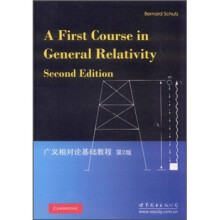preface to the second edition
preface to the first edition
1 special relativity
1.1 fundamental principles of special relativity (sr) theory
1.2 definition of an inertial observer in sr
1.3 new units
1.4 spacetime diagrams
1.5 construction of the coordinates used by another observer
1.6 invariance of the interval
1.7 invariant hyperbolae
1.8 particularly important results
1.9 the lorentz transformation
1.10 the velocity-composition law
1.11 paradoxes and physical intuition
1.12 further reading
1.13 appendix: the twin ‘paradox’ dissected
1.14 exercises
2 vector analysis in special relativity
2.1 definition of a vector
2.2 vector algebra
2.3 the four-velocity
2.4 the four-momentum
2.5 scalar product
2.6 applications
2.7 photons
2.8 further reading
2.9 exercises
3 tensor analysis in special relativity
3.1 the metric tensor
3.2 definition of tensors
3.3 the tensors: one-forms
3.4 the tensors
3.5 metric as a mapping of vectors into one-forms
3.6 finally: (m)tensors
3.7 index ‘raising’ and ‘lowering’
3.8 differentiation of tensors
3.9 further reading
3.10 exercises
4 perfect fluids in special relativity
4.1 fluids
4.2 dust: the number-flux vector
4.3 one-forms and surfaces
4.4 dust again: the stress——energy tensor
4.5 general fluids
4.6 perfect fluids
4.7 importance for general relativity
4.8 gauss‘ law
4.9 further reading
4.10 exercises
5 preface to curvature
5.1 on the relation of gravitation to curvature
5.2 tensor algebra in polar coordinates
5.3 tensor calculus in polar coordinates
5.4 christoffel symbols and the metric
5.5 noncoordinate bases
5.6 looking ahead
5.7 further reading
5.8 exercises
6 curved manifolds
6.1 differentiable manifolds and tensors
6.2 riemannian manifolds
6.3 covariant differentiation
6.4 parallel-transport, geodesics, and curvature
6.5 the curvature tensor
6.6 bianchi identities: ricci and einstein tensors
6.7 curvature in perspective
6.8 further reading
6.9 exercises
7 physics in a curved spacetime
7.1 the transition from differential geometry to gravity
7.2 physics in slightly curved spacetimes
7.3 curved intuition
7.4 conserved quantities
7.5 further reading
7.6 exercises
8 the einstein field equations
8.1 purpose and justification of the field equations
8.2 einstein’s equations
8.3 einstein‘s equations for weak gravitational fields
8.4 newtonian gravitational fields
8.5 further reading
8.6 exercises
9 gravitational radiation
9.1 the propagation of gravitational waves
9.2 the detection of gravitational waves
9.3 the generation of gravitational waves
9.4 the energy carried away by gravitational waves
9.5 astrophysical sources of gravitational waves
9.6 further reading
9.7 exercises
10 spherical solutions for stars
10.1 coordinates for spherically symmetric spacetimes
10.2 static spherically symmetric spacetimes
10.3 static perfect fluid einstein equations
10.4 the exterior geometry
10.5 the interior structure of the star
10.6 exact interior solutions
10.7 realistic stars and gravitational collapse
10.8 further reading
10.9 exercises
11 schwarzschild geometry and black holes
11.1 trajectories in the schwarzschild spacetime
11.2 nature of the surface r = 2m
11.3 general black holes
11.4 real black holes in astronomy
11.5 quantum mechanical emission of radiation by black holes: the hawking process
11.6 further reading
11.7 exercises
12 cosmology
12.1 what is cosmology?
12.2 cosmological kinematics: observing the expanding universe
12.3 cosmological dynamics: understanding the expanding universe
12.4 physical cosmology: the evolution of the universe we observe
12.5 further reading
12.6 exercises
appendix a summary of linear algebra
references
index

 缺书网
缺书网 扫码进群
扫码进群




